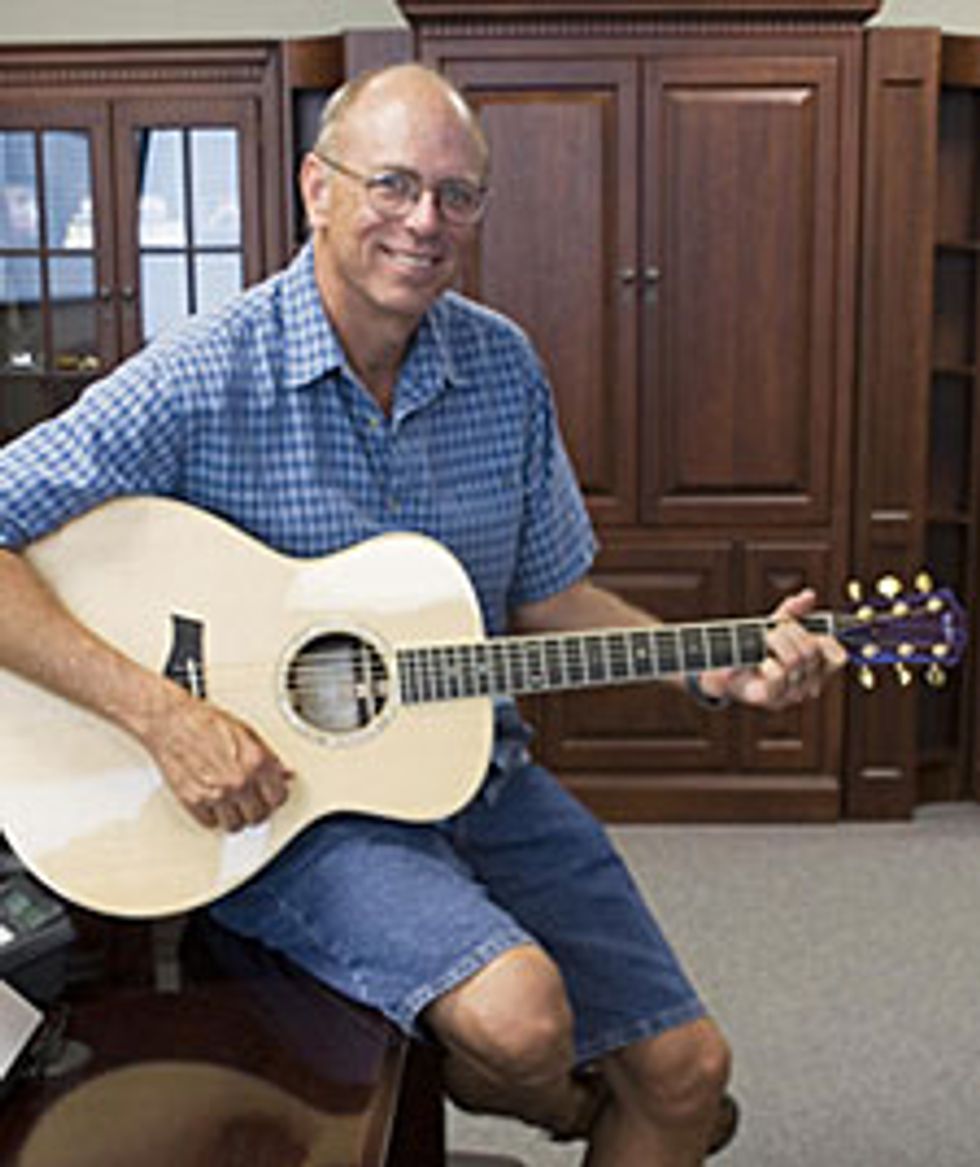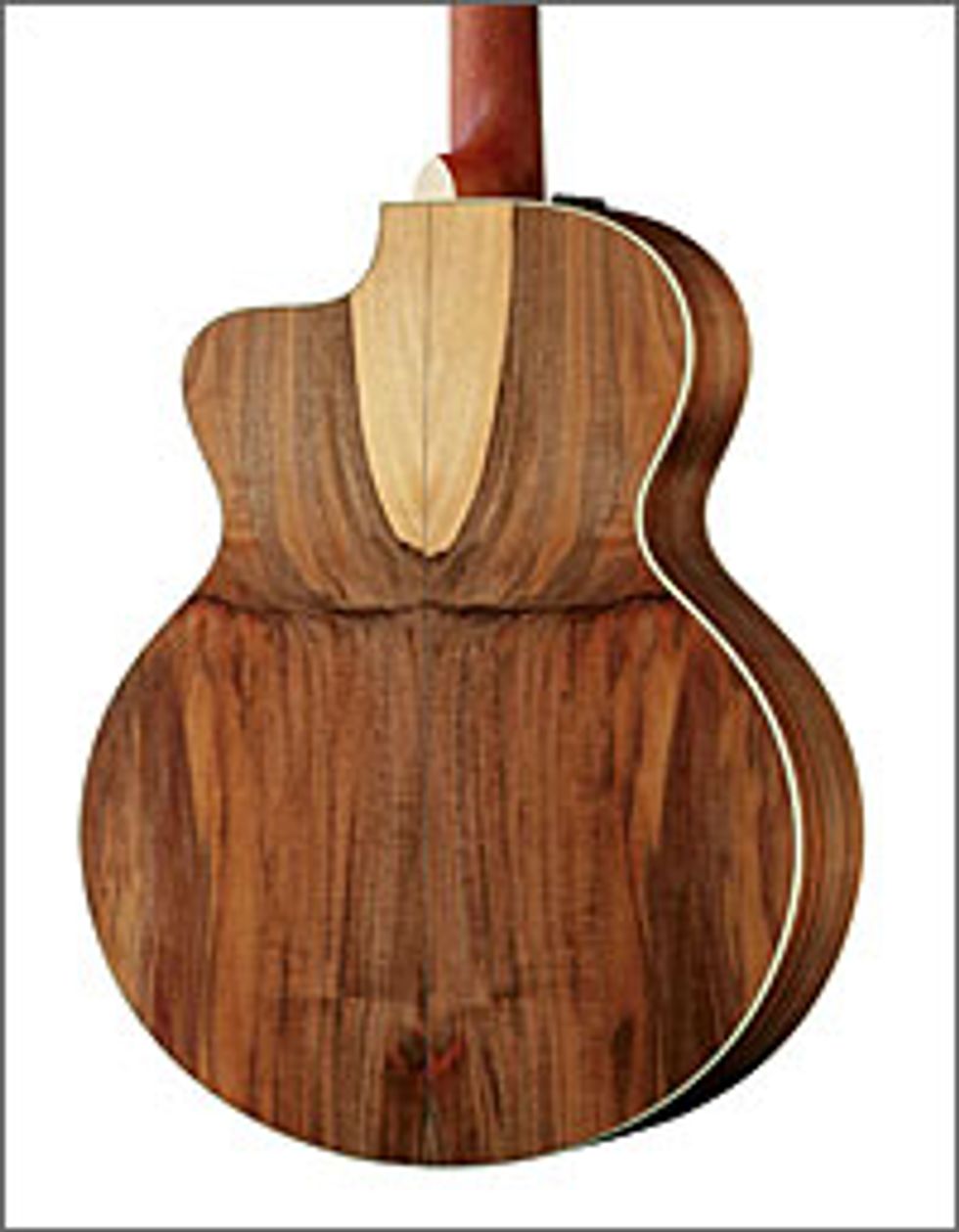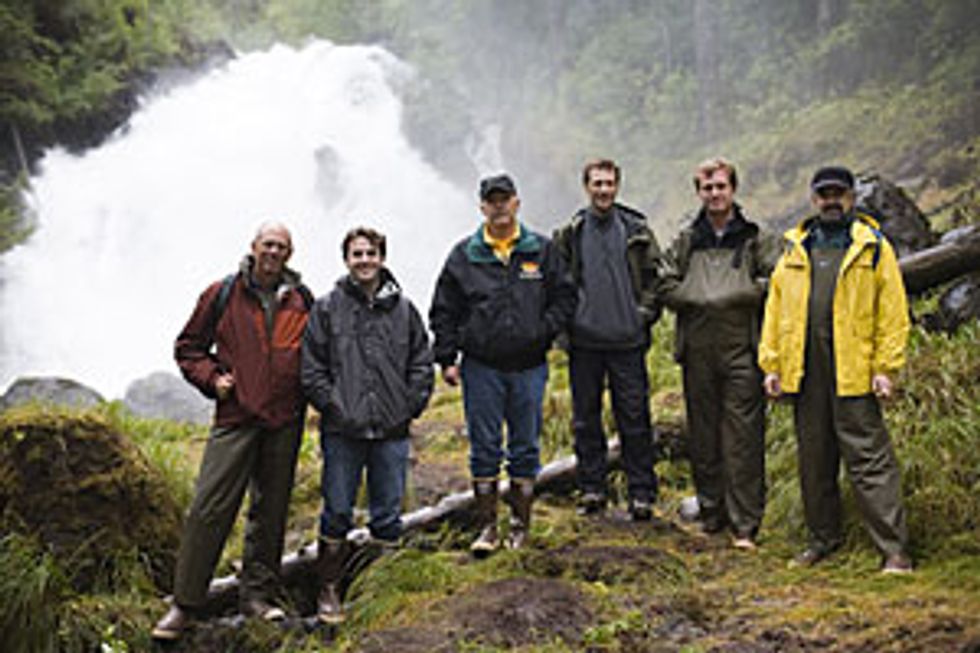 Bob Taylor, founder and president of Taylor Guitars, has always been a pioneer in the guitar industry. When we talked with him about conservation and the MusicWood Coalition, he had more to say than could fit in our print-edition. In this extended interview, Bob touches on the process of introducing alternative woods, Taylor''s unique environmentally friendly necks, and how visiting Alaska gave him a new perspective.
Bob Taylor, founder and president of Taylor Guitars, has always been a pioneer in the guitar industry. When we talked with him about conservation and the MusicWood Coalition, he had more to say than could fit in our print-edition. In this extended interview, Bob touches on the process of introducing alternative woods, Taylor''s unique environmentally friendly necks, and how visiting Alaska gave him a new perspective. How did you get into conservation?
Our conservation efforts started years and years ago just with our own use of materials. Guitar factories are pretty notorious for eating the heart and throwing away the rind, so to speak, so the most basic way for us to contribute is pretty much a lifelong practice of using every drop of the wood we get, which reduces the amount of wood that we use.
In 1999, we redesigned our entire neck to work on a different size and scale of mahogany. I could tell that mahogany was becoming a big issue for the future. We knew that the trees we had gotten in the past and the style of sawyers that were cutting that wood - big lumber companies providing the wood over the last two to three centuries - would not be environmentally friendly. We knew we would have to be going towards a more primitive type of yield.
We''ve spent the last six or seven years developing a project in Honduras where we buy wood directly from a tribe of Hondurans. They are going out on foot with their donkeys and chopping up a half dozen trees per year. They cut them into the lumber sizes we need, which are easy to cut because of our neck design. The old way we made necks could have never done it.
Their economy has boomed, the amount of trees that are cut have been reduced to nearly nothing and there are no roads built. We do a lot of projects on our own like that. Until Alaska, we''d served wood conservation mostly in terms of tropical woods.
Do all of your necks come from that handful of mahogany from Honduras?
No, but I think within the next couple of years we can get it to 20%. These things move really, really slowly. From the time that this thing started, it took over six years before they delivered their first batch of wood. Now we get wood every year, and we''re looking to parachute this system into a few other remote tribes.
Do you have a hand in training these guys?
Yeah, when it''s log-cutting time we go down and train them in our cutting methods. They really need to be trained more in the selection process of the logs and the grain. If there are two mahogany trees, and one is good for necks and the other isn''t, we don''t want to cut it - just let it be a tree.
The fact that there aren''t all these middlemen involved, that there''s no bulldozers, no outside corporations and no roads, the forest basically doesn''t even know that the trees were taken.
They probably make a lot more money also, right?
Boy, they''re … I wouldn''t say dancing in the streets … but they''re pretty happy.
You guys have always been leaders of using alternative woods. How do you determine what will work where?
It starts with just looking at the wood, being the guitar maker and knowing. After that it''s trial and error. It''s really hard to use alternative woods - you go down with bright eyes, thinking, "Let''s try this wood, let''s try that wood." You get the wood and find out that the reason that this wood hasn''t climbed to the top of the food chain is because 300 years ago when they were taking mahogany out of Honduras, and there were 20 other species that looked similar, they cut it and somebody got a rash, or the wood cracked, warped or made you sick. Those woods haven''t changed; they still have those negative properties.
For the lesser-known species of wood that work out and sound good, how does the public respond?
People are usually open to it. One way to market the woods is to just make the guitars. For example, right now I am working on a species from Tasmania called blackwood, and it''s a first cousin to the koa tree. In the beginning, I''ll get a little bit of wood and make a guitar. If it makes a good guitar, I''ll get a little bit more wood and make a limited run of guitars - 50 to 100 of them - and sell them as a special edition.
If it is a wood that is viable, I have to commit to a certain amount. The worst thing that can happen is that you find a wood, test it out and market it, only to find out that you can''t get it. So we have to test whether they can actually continue cutting it, and whether we can keep getting it. Once we find out that they can cut the wood, we have to make some guitars. We''ll make 100 to 1500 guitars out of it and see how they sell. Promote it, get the model right.
If Tasmanian blackwood actually comes on as a species for us, it will be a seven-year cycle, from the time I start working on it to the time that I am actually making a model out of it and getting wood in.

|
No, and we''ve made a lot of walnut guitars over the years. We make 70,000 guitars a year, Martin makes 70,000 guitars a year and Gibson makes a third that many. With all of the American guitars made each year, 500 are made with Walnut.
That was a really successful guitar for you guys, right?
Yeah, and we still make walnut guitars. I bought an entire orchard that was being taken out about four years ago. We do well with walnut, but it won''t be rosewood. Getting people to change their minds about what they want is a long process. We actually spend probably three times the price of rosewood on walnut. With the walnut, none of these are forest trees - most of these are backyard trees or orchard trees - so there are a lot of mouths to feed.
You''ve always been at the cutting edge with manufacturing processes - does that lend itself to being green as well?
Well, yeah, because being green on this end is using all the wood. Let''s go back to the guitar necks. The amount of waste that comes from making a neck, in square footages, is probably equal to the neck itself.
We started making necks eight years ago where we actually cut the peghead apart and spliced the peghead together to get the angle and glued the block on, which is a Spanish or classical style of building, but is also a cheap Chinese style of building.
So there are times when I really stick my neck out and do what needs to be done, but there are some critics that think we''ve gone cheap by doing some of these things. They don''t realize that the decision was based on the fact that it is immoral to be throwing away all of these pieces of wood by taking a block of wood and cutting a neck shape out of it and having this ghastly, wasteful piece that left over.

|
I''ve been there before because I''ve gone up to log wood. The last time I went was 15 years prior to this trip and I went up there with my spruce provider. I just wanted to spend a whole week seeing how this was done - plus, I like camping.
I spent a lot of time in Alaska doing that, and this time when I went up it was great because I got a different perspective on it. My hosts were environmentalists - Scott Paul and a local Greenpeace employee on the ground who knows the area and has been doing work there for 25 years.
We were on a boat and we were able to go to places you normally can''t go, so we were able to see depleted areas, virgin areas, and second growth areas that have grown back - there are plants there, but it''s really not the forest it once was. I got a real, true picture of how much has been harvested and how much of this temperate rainforest, which is really unique in the world, is changing.
Even 15 years ago when I went up there and we were on sea planes flying low, you''d look and say, "There''s so much wood here, I don''t know how we could cut it all down." Then you round the bend and as far as the eye can see it''s all gone, and it only took them five years to cut it down. When you go up there, there''s a real sense that in less than 50 years, a place like Southeast Alaska could have every tree cut off of it.







![Rig Rundown: Russian Circles’ Mike Sullivan [2025]](https://www.premierguitar.com/media-library/youtube.jpg?id=62303631&width=1245&height=700&quality=70&coordinates=0%2C0%2C0%2C0)

























